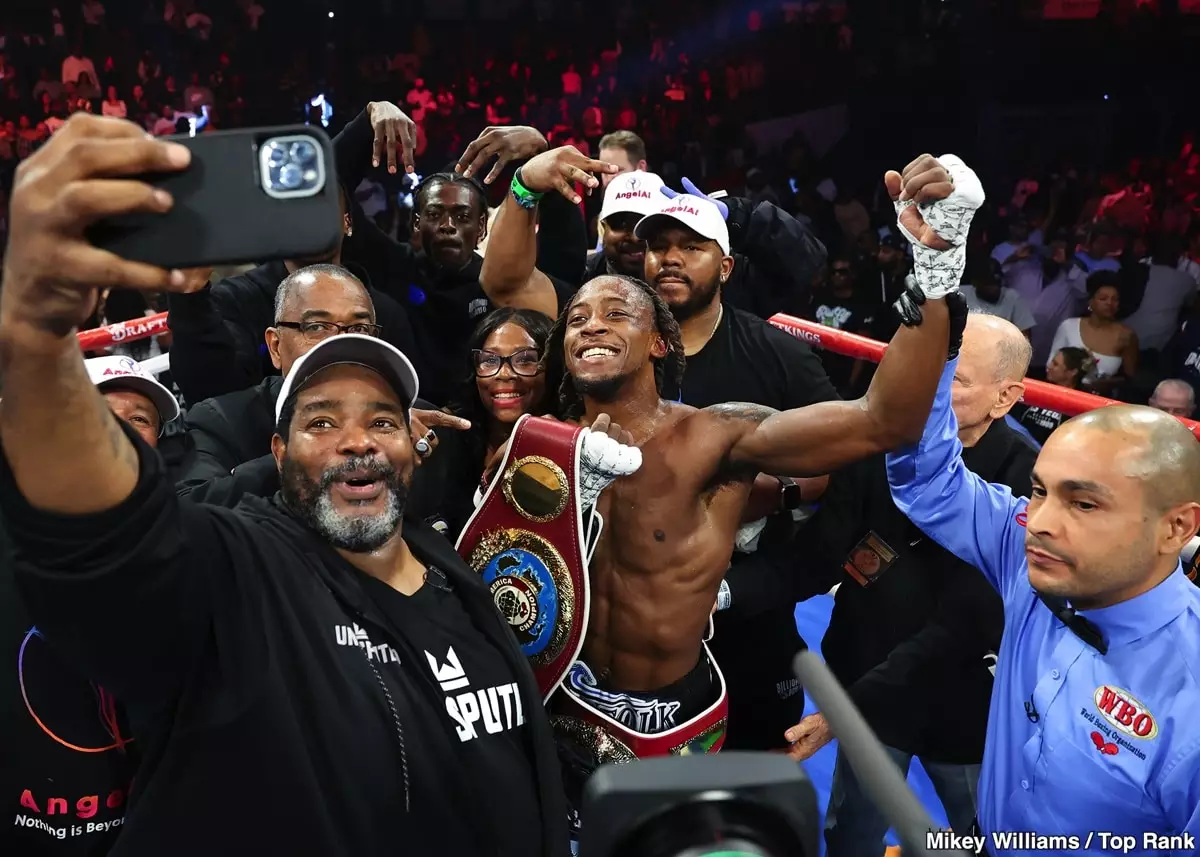In the world of professional boxing, the rise to stardom is often accompanied by strategic matchmaking, promotional flair, and occasionally, an element of misrepresentation. This is particularly relevant in the upcoming clash between WBO lightweight champion Denys Berinchyk (19-0, 9 KOs) and the highly touted contender Keyshawn Davis (12-0, 8 KOs), set to take place on February 14th at the renowned Hula Theater in Madison Square Garden. While this match is positioned as an exciting showcase on ESPN, a closer examination reveals it to be more a play of intrigue than a definitive litmus test for either fighter.
The partnership of both fighters under Top Rank has certainly paved the way for this matchup. Promoting Davis, a 2020 Olympic silver medalist, shows the organization’s intent to cultivate a new star within the lightweight division. Yet, the choice of Berinchyk as an opponent raises questions. At 36 years old, Berinchyk is not only the least accomplished champion in the 135-pound division but also a fighter who has shown vulnerabilities. His nearly faltering performance against Nahir Albright hints at potential weaknesses that could be exploited, thus casting a shadow over the intended credibility of this fight.
Davis, despite his undefeated record, has yet to face top-tier competition, raising the question of whether the hype surrounding him is justified. His self-promotion often obscures the reality of his boxing skills; while he projects an aura of confidence, one may wonder if that is inadvertently masking insecurity about his achievements to date.
Analysis of Fighting Styles: Berinchyk’s Footwork vs. Davis’ Swagger
Davis himself has noted Berinchyk’s footwork, describing it as his most potent attribute. While footwork is indeed crucial in boxing, it cannot be the sole differentiator when considering an opponent’s overall capability. Berinchyk’s ability to maintain movement has, in the past, allowed him to evade hits, yet it has not necessarily translated to dominance—a fact Davis seems to overlook. His assertion that nobody in the 135-pound category could last the distance with him greatly underestimates the resilience shown by fighters like Miguel Madueno and Francesco Patera, both of whom have gone the distance with him but have not emerged victorious.
Furthermore, Davis’ declarations of “sneaky power” in reference to Berinchyk may be more of a psychological tactic than a reflection of genuine insight. The extent of Berinchyk’s power remains to be fully assessed, especially considering that Davis himself hasn’t faced a fighter who would test his own purported abilities.
As Davis crafts his narrative in the boxing sphere, there’s a fine line between self-assurance and arrogance. His declaration of wanting to compete against established names like Gervonta Davis, Vasyl Lomachenko, and Teofimo Lopez could be seen as aspirational, but it casts doubts on his intent. Why, when faced with the opportunity to avenge his losses to Andy Cruz, does he prioritize bigger names rather than personal redemption? This prioritization gives the impression that Davis is more interested in monetary gain than in solidifying his legacy as a fighter.
While he seeks lofty challenges, his past encounters raise concerns about his actual readiness for such tests. Instead of calamitous bulldogs, he faces tomato cans in the ring, leading to a lack of significant growth. His recent fight against Gustavo Lemos exemplifies this misalignment, as he chose an opponent whose own recent performances were underwhelming, effectively managing to cherry-pick his way to another supposed victory.
The Road Ahead: Will Davis Find His Place?
Keyshawn Davis professes a desire to become “the face of boxing,” a claim that, while entertaining, may not resonate with fight fans. The competitive landscape is littered with challenges and potential pitfalls; reality may soon punctuate his self-confident narratives as he navigates this complex arena. Should he defeat Berinchyk, it would open doors, but the question remains whether it can elevate him to the elite tier he longs for.
While he talks a big game about potential unification fights and titles, the reality is that he still needs to earn credibility through significant wins against established contenders. If he hopes to be taken seriously in his quest for stardom, it’s crucial he faces fighters who can truly test his mettle. Until then, he runs the risk of becoming another fleeting figure in the boxing realm—brimming with promises yet lacking the substance to fulfill them. The upcoming bout is merely a stepping stone, and whether it leads to solid ground or further entanglement in the webs of self-promotion remains to be seen.


Leave a Reply